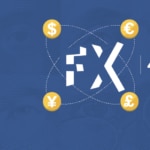The currency market: What products are available?
As we have already seen, the currency market or exchange rate market is a global decentralized market where currencies are traded and which was born to provide coverage to the monetary flows resulting from international trade.

Within the foreign exchange market there is a range of contracts available depending on the needs we want to cover. The products listed below are the most representative ones of this market:
- Spot contract; a contract where two parties agree to exchange an amount in one currency for another amount in another currency, based on the market price of those two currencies.. Generally, this exchange of amounts takes place two working days (D+2) after the trade date (although some pairs have a D+1 exchange date, such as is the case of the dollar and the Turkish lira USDTRY).
- Forward exchange contract; agreements between two parties to exchange a sum in one currency for another sum in a different currency, on a future date later that exceeds two working days. The terms of the operation that will take place in the future are agreed at the present date (currency pair, term, amount, exchange rate). No funds are transferred until said future date. Normally, we distinguish between exchange risk insurance for exports (sale of foreign currency to convert it into domestic currency) and exchange risk insurance for imports (purchase of foreign currency in exchange for our domestic currency).
- Non-deliverable forward; in certain countries (Brazil, Colombia, Chile etc….) capital movements are subject to controls or restrictions. In these markets, Non-Deliverable Forwards (NDF) are used as foreign exchange hedging or speculation instruments. These agreements are similar to exchange risk insurances, but instead of resulting in a settlement with physical movement of capitals or principal amounts, the counterparties settle the difference between the contracted NDF price or rate and the prevailing spot price or rate on the settlement date (market reference Fixing or Benchmark) and the amount to pay or receive is calculated based on the notional amount (reference amount that is not exchanged) used.
- Currency swap; this instrument accounts for the highest volume of operations in the currency market (approximately 47%). Currency swaps are bilateral contracts, where two parties agree to exchange two amounts in different currencies within a limited period of time (e.g. six months). In reality, these instruments are the sum of a cash amount and an exchange risk insurance; there is an initial exchange on the Spot date (D+2) and a final exchange on the settlement date. The difference between the spot exchange rate and the forward exchange rate is what is known as swap points, which basically reflect the interest rate differential between the two considered currencies.
- Foreign exchange options; agreements between two parties where one buys, subject to the payment of a premium, the right to buy (call) or sell (put) a currency in exchange for another one, while the other party acquires an obligation to sell or buy said currency in exchange for the premium. These are, together with the foreign exchange futures, the only products of the foreign exchange market that are traded in organized markets.
- Foreign exchange futures; these futures are exchange risk insurances traded in organized markets, and therefore, their characteristics, unlike the former, are standard; the price of contracts, maturities, etc… We can trade them in the CME (Chicago Mercantile Exchange), which is the most liquid organized market, and in other markets such as Euronext and the Tokyo Financial Exchange.

Distribution Channels of FX Products
Generally speaking, cash is considered a flow product while the rest of products are considered as exchange rate derivatives.
But, how are these products distributed among customers? what channels are used for this purpose? basically we can distinguish between traditional channels (telephone, dealing, email) and electronic channels. The popularity of electronic channels has skyrocketed in recent years, in a way such that over 60% of the total volume is traded through electronic platforms.
Within these platforms, we can differentiate between bilateral or proprietary (bilateral relationship between the financial institution and the customer) which can be oriented towards international payments (transactionality) or the foreign exchange market itself; and multibanking platforms, where a group of financial institutions simultaneously quote prices for customers. A good example are platforms such as 360T or Fxall.